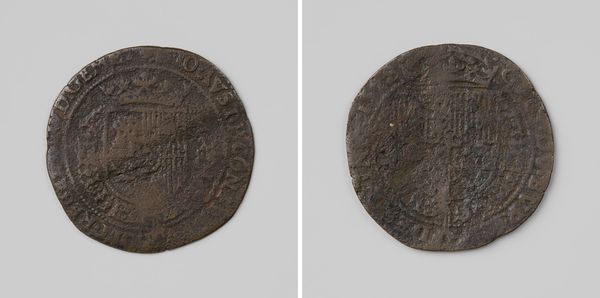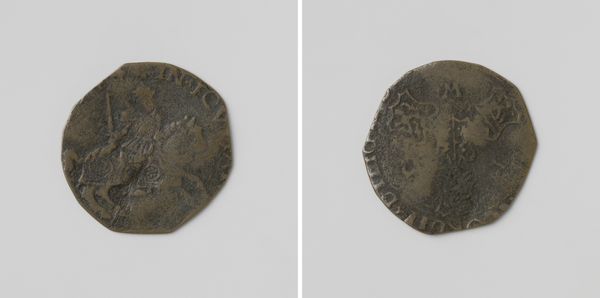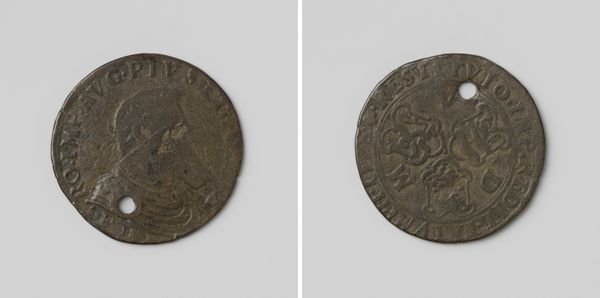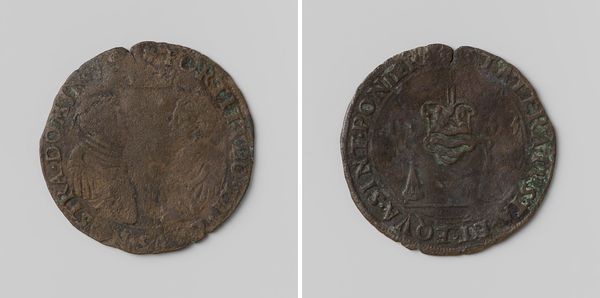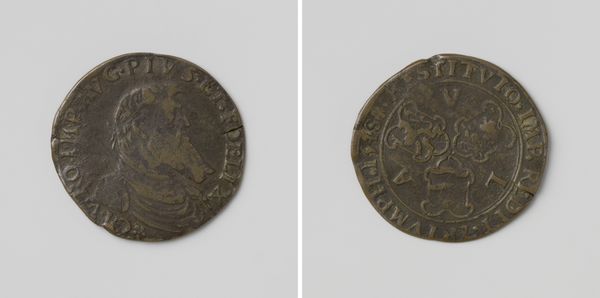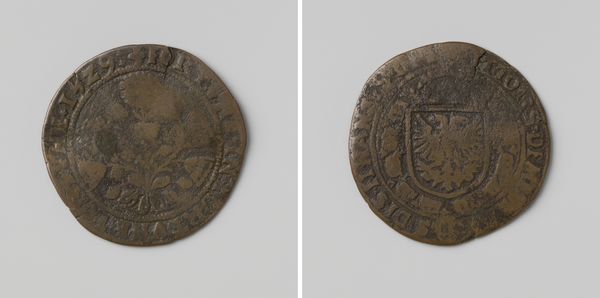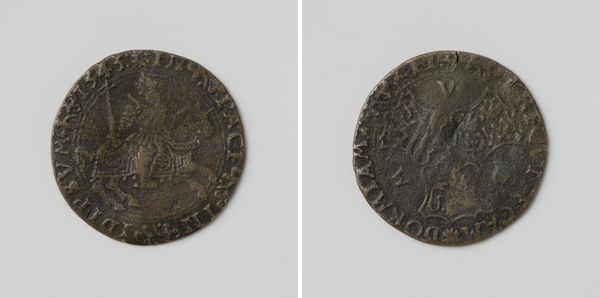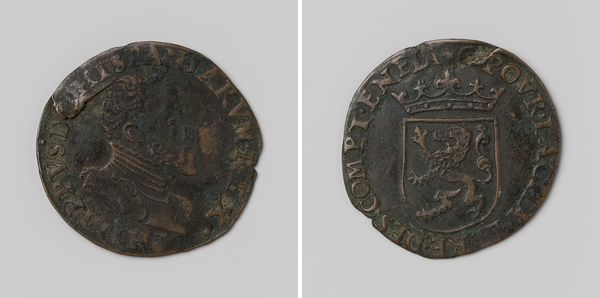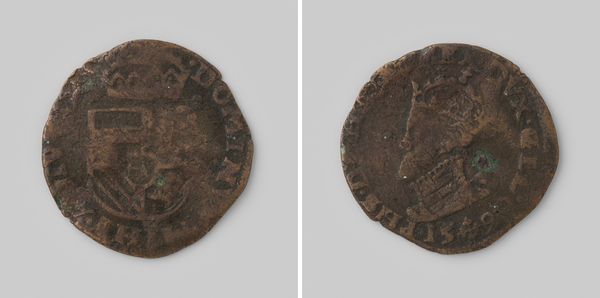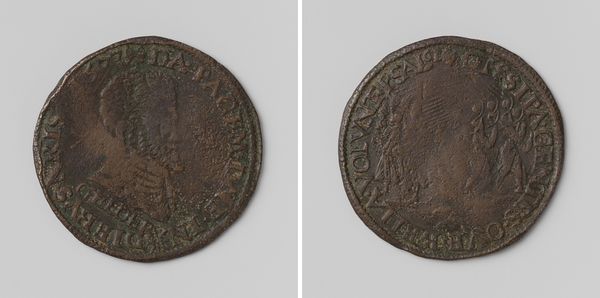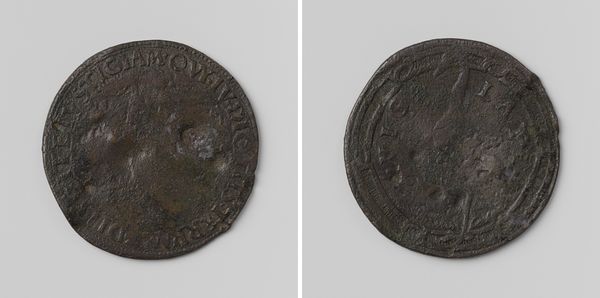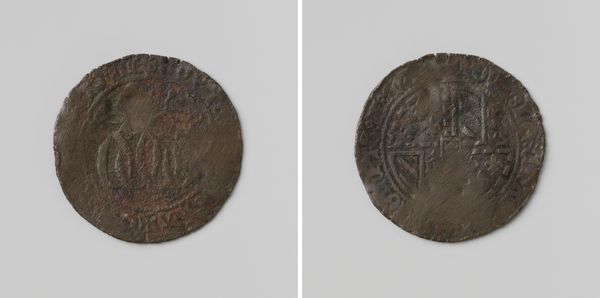
Overwinning op de Fransen in de slag bij Pavia, spotpenning op het handelen van paus Clemens VII 1525
0:00
0:00
metal, relief, engraving
#
metal
#
relief
#
11_renaissance
#
carved
#
engraving
Dimensions: diameter 2.8 cm, weight 2.94 gr
Copyright: Rijks Museum: Open Domain
Curator: Here at the Rijksmuseum, we have an intriguing piece dating back to 1525. It’s a spot penning, an "Overwinning op de Fransen in de slag bij Pavia," commemorating the victory over the French at the Battle of Pavia. This work is from an anonymous artist and the piece is metal. Editor: Immediately, I notice how worn the metal is. Each imperfection tells a silent story. But beyond that, there’s a striking power conveyed in the details of the relief—the eagle, especially, projects dominance despite the medal’s small size. Curator: It’s interesting that you highlight the eagle because the imagery used here would certainly carry social and political significance at that time. As a symbolic form of communication it served to assert authority, in the early 16th century the politics surrounding religious leadership was at a turning point and therefore an active commentary by way of art. The politics surrounding religion often involved violence against those deemed "others." Editor: Absolutely. It forces me to reflect on the role of Pope Clement VII during the battle, as the title references, particularly his shifting allegiances between Francis I and Charles V. How much did his political position affect the overall narrative around war at the time and which societal voices are noticeably missing from this declaration? Curator: His shifting alliances reflect the complex intersection of religious, political, and national identities during the Reformation. The spot penning is in a way a form of propaganda, highlighting power and influence which reinforces a structure of leadership and marginalization that would have had a great impact on those at the periphery. Editor: This seemingly simple piece reveals so many complex socio-political layers at play within early 16th-century Europe. Curator: It serves as a potent reminder of the intertwined nature of art, history, and power dynamics, and provides us with important insights regarding intersectionality. Editor: Indeed, examining art objects like this urges us to question whose stories get told, and perhaps more critically, whose stories remain buried beneath the surface of historical accounts.
Comments
No comments
Be the first to comment and join the conversation on the ultimate creative platform.
